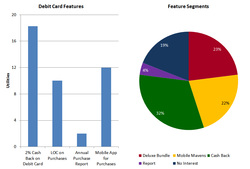Trade-Off Models

The third stage of product design research initiative involves some flavor of a trade-off study. In this stage the focus is on getting more specific and nailing down some of the specifics regarding how precisely some new feature is going to be implemented. Staff develops some alternative mechanisms of implementing a desired outcome, and customer input regarding the attractiveness of these different alternatives is solicited. But rather than testing the features in isolation, the trade-off study uses experimental design methods to create a scientifically-selected number of product bundles that combines the different features into "products" that are then evaluated. By virtue of how the different product bundles are chosen with the experimental design, it is possible to evaluate all of the different possible features without testing every possible combination.
Trade-off studies typically fall into one of three different classes. Each approach has some distinct value and reason to recommend it. The models include:
Trade-off studies typically fall into one of three different classes. Each approach has some distinct value and reason to recommend it. The models include:
- Full Profile Conjoint studies present a description of the product and the way the different features are implemented, and asks the respondent to evaluate the product. The product is then either ranked in comparison to all of the other products, or it may be rated on some scale (e.g., 0-100) of attractiveness, likelihood of purchasing, or the like.
- Discrete Choice Studies present the respondent with a selection of the hypothetical products and asks the respondent to indicate which of the products they would be most likely to purchase, often including the option to not purchase any of the alternatives.
- Max-Diff Studies isolate the trade-offs by asking respondents to select the ideal option as well as the least preferred option in a subset of all of the options. The Max-Diff model is often used when the tested features are binary; sometimes the Max-Diff model is used in place of the Kano model.
